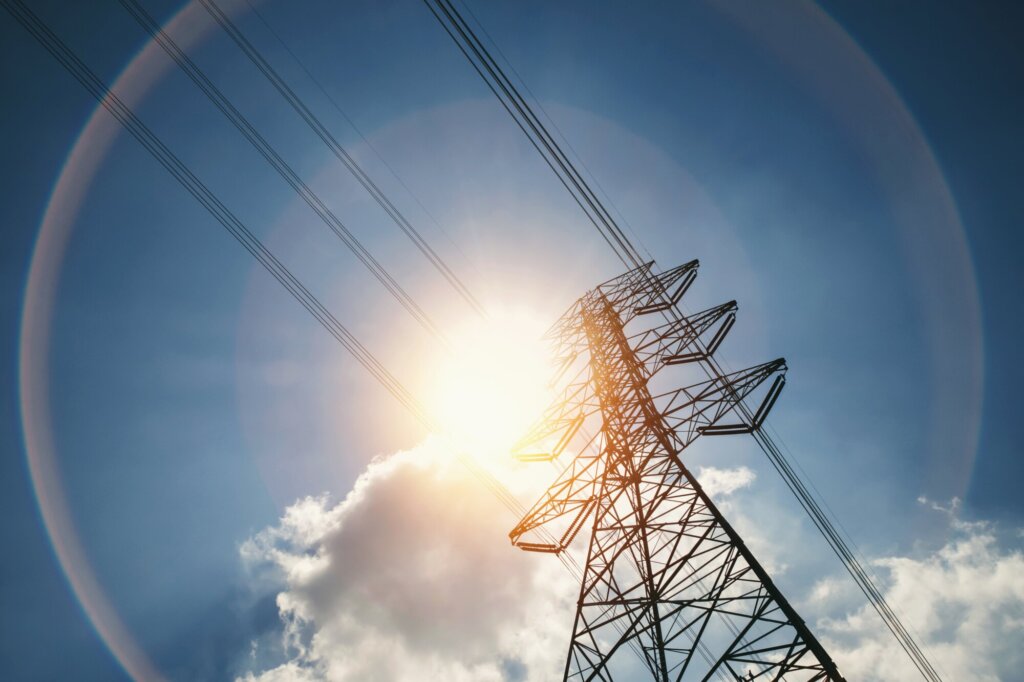Dunsky Develops Research Identifying the Critical and Cost-Effective Role of Solar and Wind in Ontario and Alberta

Analysis provides the basis of a new report from Clean Energy Canada advancing the economic case for renewables in two of Canada’s largest provinces
Clean Energy Canada released a report containing research from Dunsky Energy + Climate Advisors which demonstrates that, on an energy basis, new wind and solar power are less costly to produce in Ontario and Alberta than new natural gas construction across most scenarios, and that savings will increase moving forward. The report presents one of the first publicly available cost forecasts specific to Alberta and Ontario for new wind and solar power with batteries as well as natural gas.
Key findings from Dunsky’s analysis include:
- Solar and wind already offer competitive or cheaper energy than natural gas generation in Ontario and Alberta (both with and without consideration of carbon pricing)*, with additional significant cost declines on the horizon.
- Renewables paired with storage offer compelling opportunities for dispatchable grid resources that can contribute to capacity needs at increasingly more competitive costs relative to gas peakers.
- While costs are directionally aligned across jurisdictions, several regional factors are impacting deployment costs, both between the U.S. and Canada as well as among the provinces.
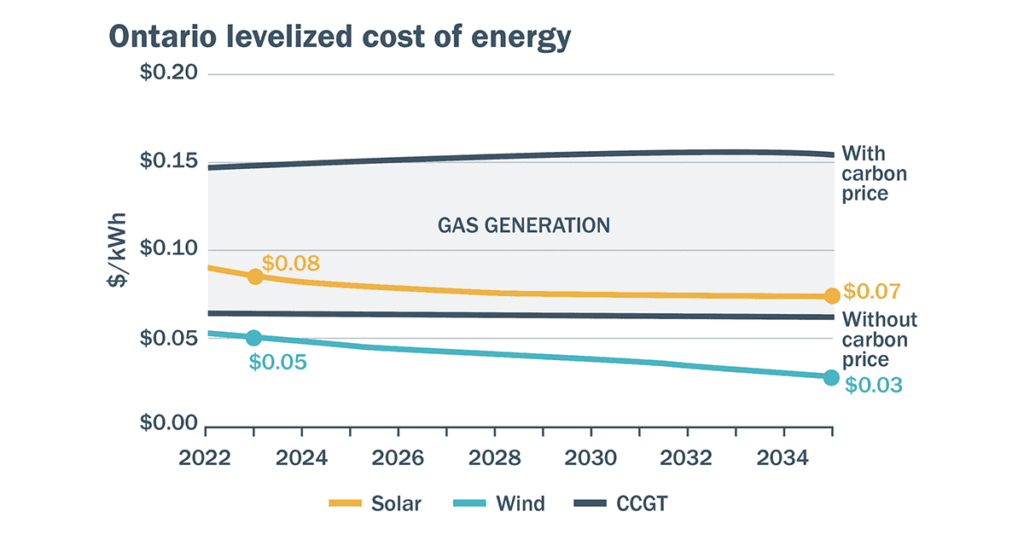
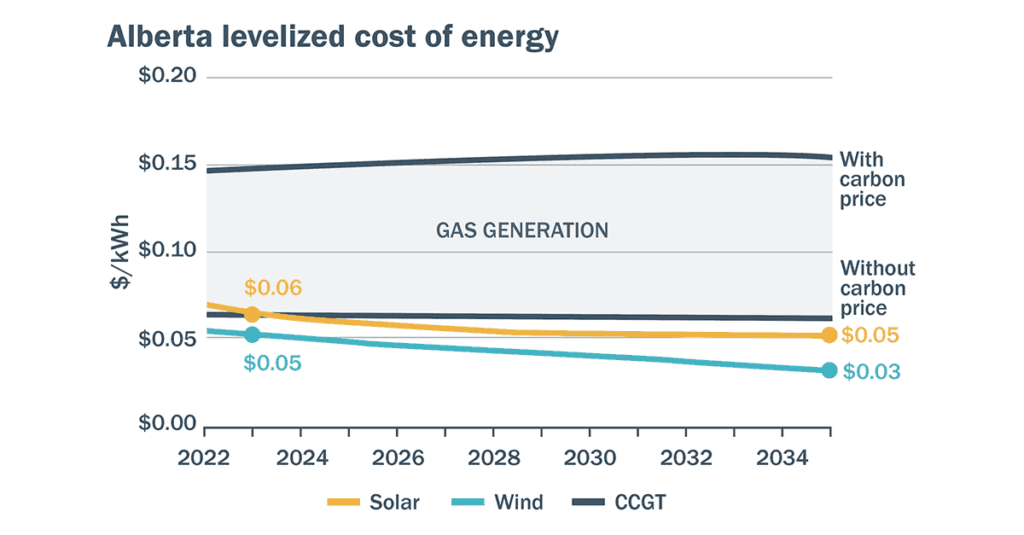
The above-graphs highlight the Levelized Cost of Energy (LCOE) for renewables in both provinces. It considers the investment required to build the plant, its projected operational and maintenance costs, and the amount of electricity it will produce.
To conduct this research, Dunsky developed and applied a method to translate the existing resource cost forecasts for key renewable electricity resources into rigorous cost estimates for new solar, onshore wind, and 4-hour and 8-hour energy storage projects in Alberta and Ontario over the next decade.
For each technology and geography, Dunsky evaluated both the capital and operational costs associated with the technologies and developed an annual projection of the levelized cost of electricity up to 2035. Dunsky also looked at the costs associated with deploying 4- and 8-hour lithium-ion batteries alongside wind and solar, developing cost forecasts based on co-deployment.
To ensure an appropriate comparison, Dunsky assessed the net cost of different combinations of energy and storage capacity, and found that when considering the future cost of emissions, renewable generation combined with storage would be cost-competitive with natural gas generation. While it’s clear that natural gas generation provide different services and reliability characteristics to the grid, we saw lithium-ion batteries with up to 8 hours of storage could be combined with renewable generation at costs that are expected to undercut the future cost of producing electricity from natural gas resources – especially peaking resources that are more aligned to meeting capacity constraints. Storage combined with renewables can provide dispatch characteristics and grid services that will be needed in a decarbonizing electric grid.
Figures in the three graphs below reflect the forecasted costs for renewables and storage in Alberta, however similar trends were observed in Ontario.
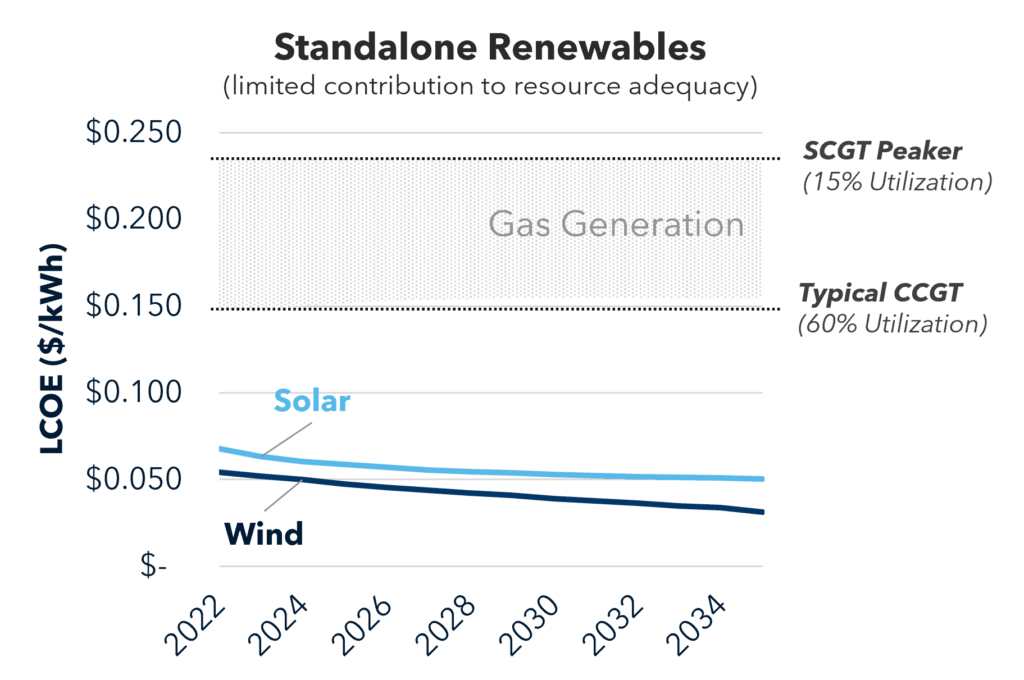
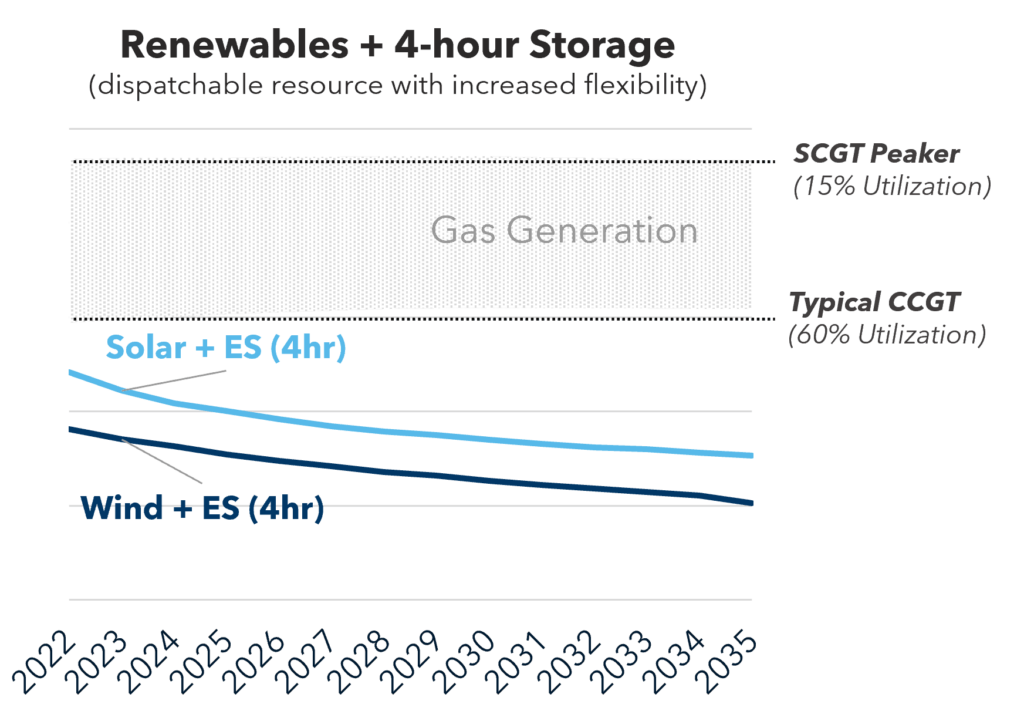
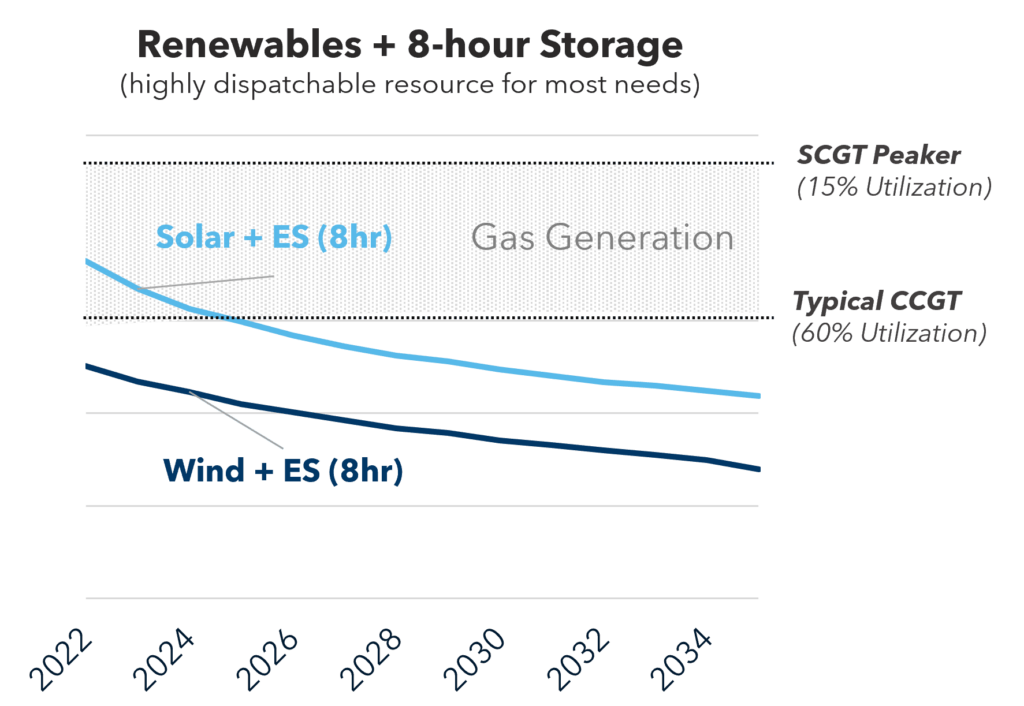
As Alberta and Ontario make investments to transform their grids, this analysis and report offer policymakers in those provinces a new set of data to utilize as they make decisions about how to supply low carbon power to their territories affordably while reducing emissions. The findings also underline the advantages for all jurisdictions to conduct tailored analyses about the cost-effectiveness and use case of clean energy sources where these resources can support their grids while maintaining reliability.
Dunsky has a significant track record helping clients understand the potential for clean energy in their territories, and strategies to deploy those energy resources effectively and at scale. The full report, as well as Dunsky’s analysis, can be found on Clean Energy Canada’s website.
*The comparison depends on uncertain future costs and performance with different risk profiles for generating technologies. However, given current expectations, these technologies are competitive when comparing the expected cost per MWh of electricity produced.
About Dunsky
Founded in 2004, Dunsky supports leading governments, utilities, corporations and others across North America in their efforts to accelerate the clean energy transition, effectively and responsibly.
With deep expertise across the Buildings, Mobility, Industry and Energy sectors, we support our clients in two ways: through rigorous Analysis (of technical, economic and market opportunities) and by designing or assessing Strategies (plans, programs and policies) to achieve success.
Related Projects
- Read more about Unlocking Vehicle-Grid Integration in Canada
Unlocking Vehicle-Grid Integration in Canada
September 25, 2025
A new report from Dunsky prepared for CSA Group provides a comprehensive look at the Vehicle-Grid Integration (VGI) landscape in…

- Read more about Toronto Hydro and Dunsky Help Enable Customer Clean Energy Projects Through Cleantech Services Network
Toronto Hydro and Dunsky Help Enable Customer Clean Energy Projects Through Cleantech Services Network
July 3, 2025
Barriers to undertaking clean energy projects are not just financial. A significant barrier for residential and commercial building owners to…

- Read more about Utility Projects on the Go
Utility Projects on the Go
October 18, 2024
Our team is currently supporting utilities on both coasts (and others in between) with a variety of strategic initiatives. Here…
